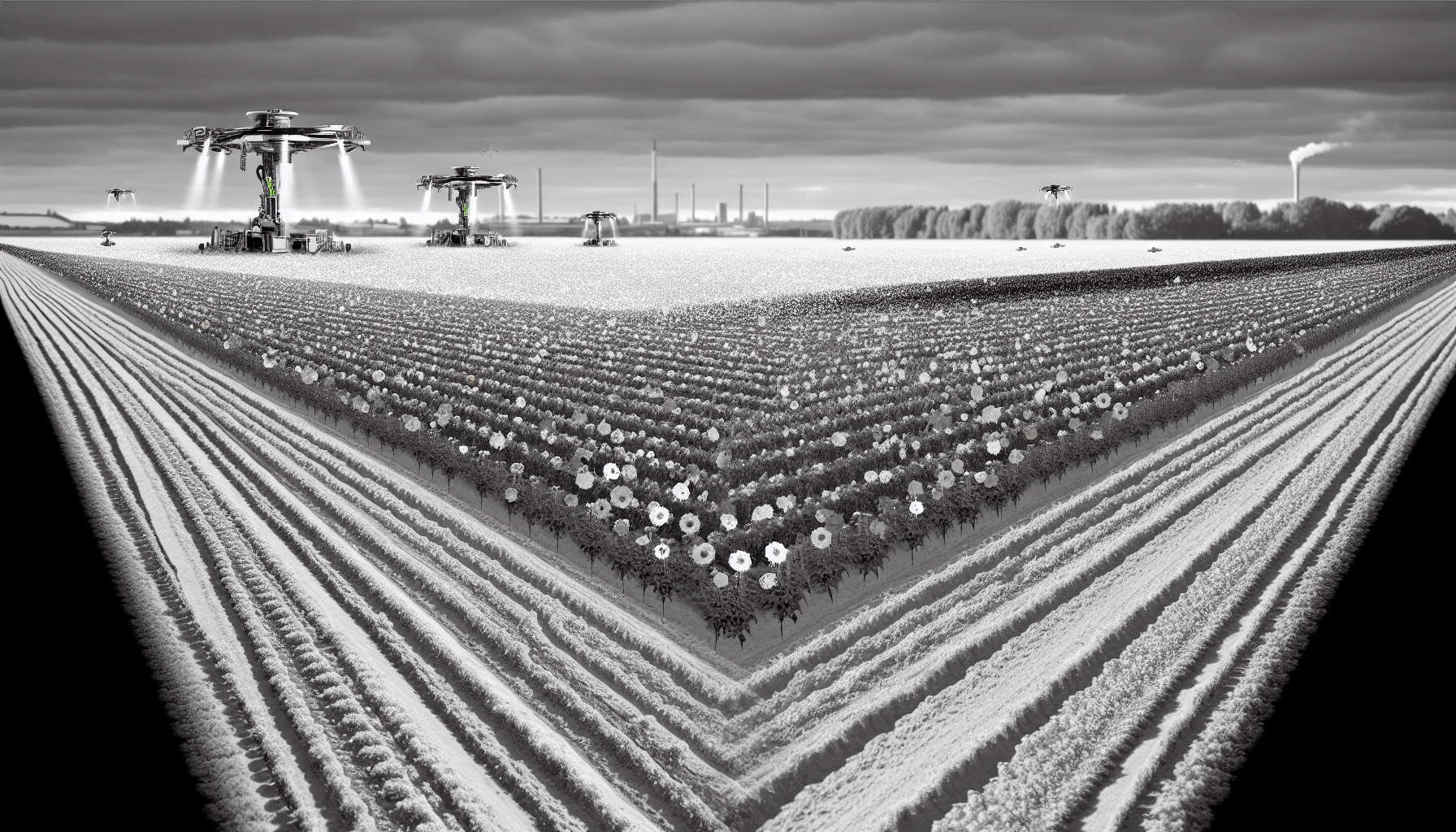As the sun rises over the vast expanses of what were once known as the flower-rich prairies, a deafening silence fills the air. Where the ground should be a tapestry woven with the brilliant colors of wildflowers, there lies only a monochrome palette of desiccated browns and grays. ‘No More Nectar – The Silent Spring of the Flowerless Fields’ is not merely a headline; it’s a requiem for a world that has lost the brushstrokes of its most tireless artists—the pollinators.
Peering into this eerie stillness, one’s mind reels at the thought of such a scenario. How did we arrive here? The demise of pollinators foreshadowed this event. Yet, as we observe the barren fields, we understand it was not just a forecast but a prelude to the cascading failures within our ecosystems. It’s a landscape where the silent spring is no longer a metaphor—it is reality.
Imagine walking through these fields. Your footsteps disrupt no bees, your presence attracts no fluttering butterflies, and not a single hummingbird darts by in a flash of color. Flowers—if any still cling to life—crumple without the promise of pollination. The intricate dance between flora and fauna has ended, and with it, the symphony of life has turned into a hollow echo. It’s a world where the fruits of nature’s labor have effectively vanished.
The barrenness extends beyond the visual. Our palette of scents has suffered the same fate. Where fragrant meadows once aroused the senses, there is now a void. Plants that once advertised their splendors now find no audience. This is not a world that accommodates life; it is a realm that serves as a stark reminder of our failures.
The absence of what once was pervasive is disturbing, but it’s essential to dissect the severity. Fields without flowers are not simply a matter of lost beauty—they represent a graveyard of potential. Every seed that does not germinate, every flower that fails to bloom, every fruit that will never be harvested, tells the saga of our neglect and its unforgiving consequences.
Drawing parallels with Rachel Carson’s ‘Silent Spring,’ our generation faces a similar crisis. Only this time, the silence is not expected to end with the return of birdsong. The pollinators are gone, and with them goes the cornerstone of our environmental tapestry. This vanishing act has laid bare the vulnerabilities in our food system, the fragility of our natural world, and our hubris in assuming we could escape unscathed.
Our agricultural landscapes have transformed from a biodiverse cornucopia to an industrial wasteland, sterile and uniform. This is the price of ignoring the silent pleas of those diminutive workers, as their numbers dwindled, casualties of our chemical warfare and habitat destruction.
Despite the bleak vista, humanity treads on pathetically with makeshift solutions to gaping problems. Plodding contraptions made to resemble bees buzz unconvincingly among crops as a temporary stopgap where life once flourished effortlessly. No machine can replace the nuance and natural efficiency of pollinators. These are palliative measures—desperate attempts that garner neither triumph nor reprieve.
Concluding this dispiriting account, one wonders if there is a way to awaken from this nightmarish reality. But the narrative of our time is unyielding, written not in ink, but in loss. The flowerless fields stand as monuments to collective failure, and no amount of nostalgia can cultivate the seeds of change in infertile ground.
In this somber hour, let us wander the fields with heavy hearts, remembering the whispers of nectar and vibrancy that can no more stir our senses. For these are the days of the Silent Spring of the Flowerless Fields, where the remnants of what once could have been, now linger only as a cautionary tale.
